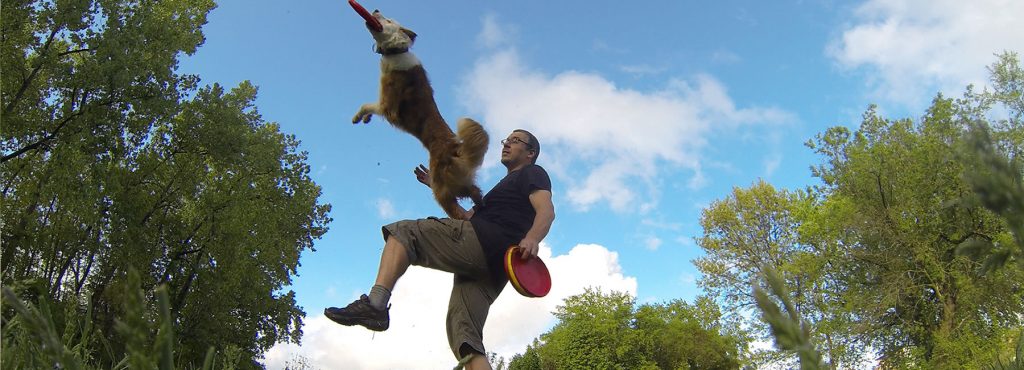
Rebound vs Fakie
Patron’s Only Sneak Peek… Public Access Jan 22
A Reverse Vault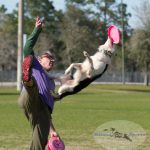 Essentially a flip off of a part of the handler's body, the Reverse Vault is a vault that stays on one side of the handler. If the dog starts the trick in front... More or a Rebound is essentially a flip off the handler’s body. This is a fairly standard trick.
Essentially a flip off of a part of the handler's body, the Reverse Vault is a vault that stays on one side of the handler. If the dog starts the trick in front... More or a Rebound is essentially a flip off the handler’s body. This is a fairly standard trick.
About 15 years ago, Leilani and I created the Fakie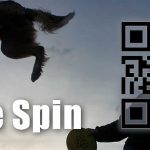 An athletic Set Up Move, the Fakie is a flip off of the handler's body (normally the chest) with no disc in flight or intended to be caught. It is usually named by... More, which like a Rebound or Reverse vault, has the dog flipping off the handler’s body, but there is no target available. I called it a Fakie because it was a fake vault, or a nothing move.
An athletic Set Up Move, the Fakie is a flip off of the handler's body (normally the chest) with no disc in flight or intended to be caught. It is usually named by... More, which like a Rebound or Reverse vault, has the dog flipping off the handler’s body, but there is no target available. I called it a Fakie because it was a fake vault, or a nothing move.
In the intervening years, the move has gotten quite popular and is easily conflated with the Reverse Vault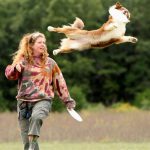 The dog uses the player´s body as a launching pad to jump for a disc. A Vault is a leaping catch from the handler’s body. The dog leaves the ground for the target... More, as it is the same basic movement. This conflation is more than a semantic distinction.
The dog uses the player´s body as a launching pad to jump for a disc. A Vault is a leaping catch from the handler’s body. The dog leaves the ground for the target... More, as it is the same basic movement. This conflation is more than a semantic distinction.
This conflation between the Fakie and the Rebound is a big issue in teaching and performing the Rebound or Reverse Vault. Many people teaching disc dog freestyle have unintentionally fed this problem by not attending to the distinction between the two and by misapplying our Vault Discrimination foundation in their teachings.
It’s time to set that straight.
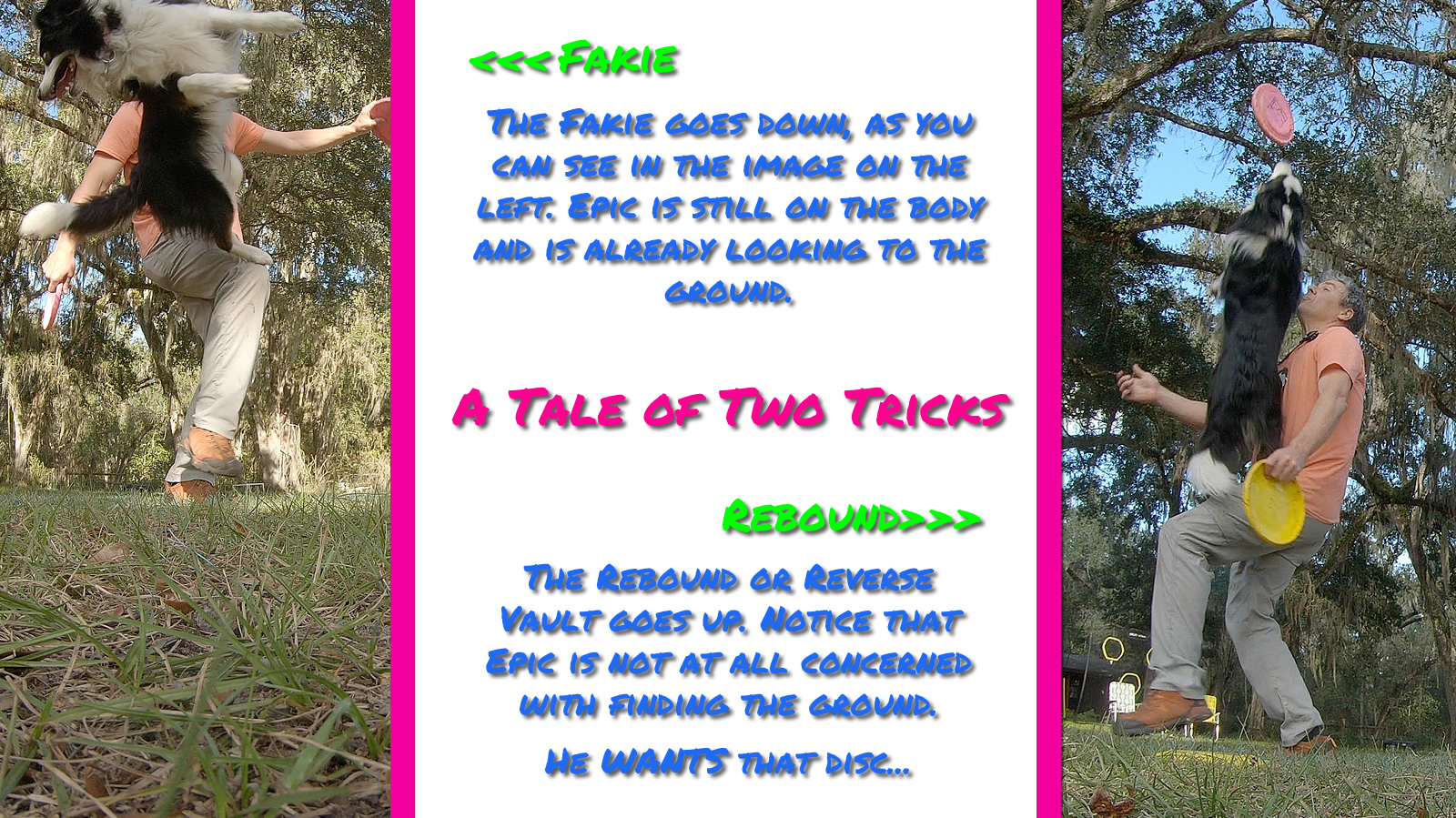
What’s the Difference?
Take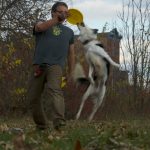 A Take is a cued Bite that replicates the placement and timing of a throw. Usually used with overs, vaults, and flips, the Take is a powerful teaching tool for creating habitual leaping... More a look at the image above and you can see a clear difference. The Rebound is going up. The Fakie is going down.
A Take is a cued Bite that replicates the placement and timing of a throw. Usually used with overs, vaults, and flips, the Take is a powerful teaching tool for creating habitual leaping... More a look at the image above and you can see a clear difference. The Rebound is going up. The Fakie is going down.
Rebound Mechanics
A Rebound or Reverse Vault has the basic mechanics of a standard disc dog flip. The dog looks up, over the shoulder and leaps with a flipping action up towards the target. The upward trajectory of the flip gives the dog time and space to navigate both the catch of the disc and the landing.
Fakie Mechanics
A Fakie has the mechanics of a Flyball box turn. The dog skips the upward flipping trajectory and focuses on the ground in order to quickly get into position for a real live target, much like the Flyball dog “flips” off the box in order to quickly get back into the race back to the handler and the tug.
The upward, flying trajectory of the Rebound or Reverse Vault would be counter productive in the case of a Flyball box turn, as the extra time can’t be spared and the flying trajectory could be more than a bit dangerous without the vertical trajectory.
How Does It Get Conflated?
The Fakie and the Rebound get conflated because the dog/handler/team doesn’t understand, foundationally, the distinction between the two. They don’t understand that Rebounds go up and Fakies go down, from the get go.
This lack of understanding happens, most often, due to inattention to the target and/or target placement by the handler. Flipping off of the handler is not the full story of the Rebound while flipping off the handler is the whole story for the Fakie.
Inattention to the Target
Handlers are so jazzed to get the flipping off the handler action that the target and target placement gets overwhelmed by the performance of the action. So the dog jumps up and flips off the handler and we’re good to go. Being excited and moving forward with a partial skill, before the skill is complete is a common training mistake, and a common cause of Rebound/Fakie conflation.
Without the target, the dog learns to look for and focus on the ground for the landing.
Inattention to Target Placement
This is also super common, and is more about the training method than a training mistake.
When training the Rebound, having the dog focus on the target is key, but where the target is placed is where the dog focuses. If the target is not placed UP above the dog or the dog doesn’t look UP for the target, then the dog will be focused on the ground and race to a landing to chase the cookie on the ground.
Most handlers don’t care too much about where the target is; just get the action and we’re good to go. More often than not this means that the target gets dropped under the dog’s nose, or below the dog’s head. This target placement is fine for the Fakie, but is incompatible with the Reverse Vault.
Why Does This Matter?
If the dog’s understanding of a Rebound or Reverse Vault is a target under the head or towards the ground, then a disc placed over the head is surprising. If the team has done a ton of work on this, as many teams do, then the team is working against both Reward PlacementThe dog puts his face where the Cookie or the disc happens. Where you put the reward matters. Reward Placement is huge in disc dog freestyle. Your dog’s face will always wind up... More and Reward HistoryReward History speaks to the amount and quality of reinforcement that has happened on a behavior in the past. Having a good Reward History on a behavior means that the dog likes to... More. That’s trouble.
Downward Reward Placement with a strong Reward History will make a safe and successful Reverse Vault trajectory a completely new skill. It makes the target up there a surprise. It’s probably not a good idea to be surprised on your first few reps of being upside down 5-6 feet up in the air. Of course there is usually more than enough time, and it’s rarely going to result in a crash, but why would you want to train something one way and perform it another?
On the performance end, a Fakie movement on a Rebound creates erratic and inefficient performance of the skill. The dog gets stuck between up and down and usually winds up pounding on or flying away from the handler.
How to Discriminate Between the Two?
If this all sounds familiar to you, don’t sweat it. A few cookies with clear intent to discriminate the two will fix your issue. If you’re getting started on the skill, or ready to give it a shot, pay attention.
All you have to do is call the dog up onto a vaulting platform (we use an exercise ball) or the handler’s body and present a cookie (food) above the dog’s head as he or she lands on the vault platform. MarkShort for “Positive Marker”, a Mark is a word or signal given at the exact moment a desired behavior is performed. It’s like a clicker. Mark can also mean the act of marking... More when the dog looks at the cookie and drop the cookie over and behind the dog’s head so the dog looks up and back. There is no need to throw it or do anything fancy. Simply drop that cookie from over and above the dog’s head so the dog must look up and back for the target.
This creates a target and shapes trajectory that fits the target placement of the Rebound or Reverse Vault.
You will also want to have two distinct verbal cues: one for Fakie and one for Rebound. “Hit it” or “Up Pup” for both won’t cut it and will create confusion.





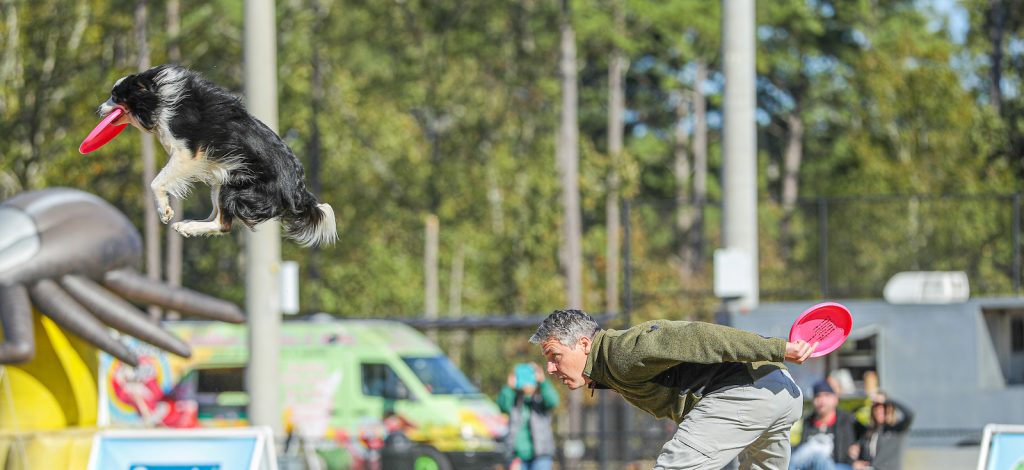

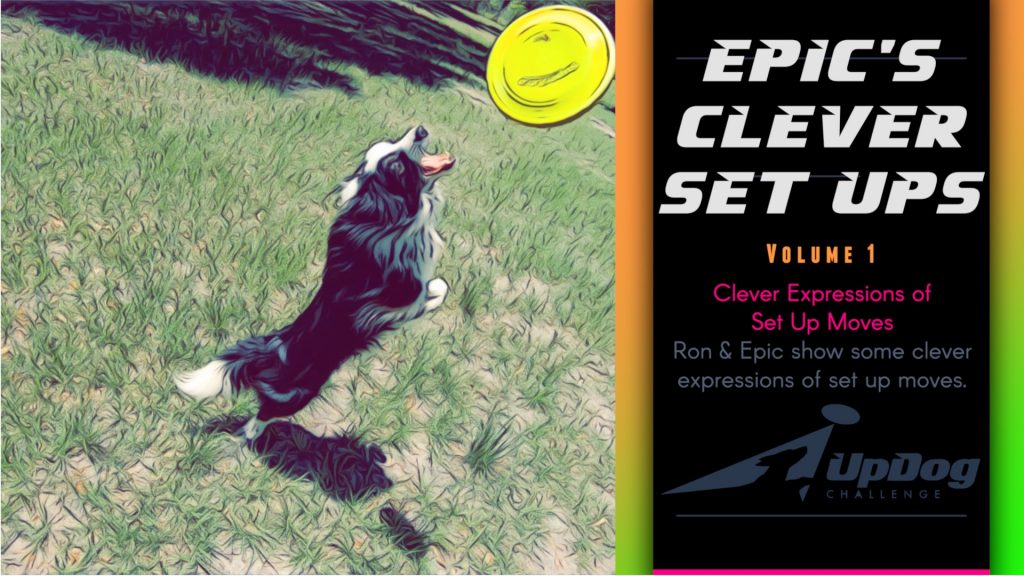


Thanks, now I have a clear distinction between these tricks. We had some work on our Fakie yet, but we’re getting start to learn it over again using an exercise ball. Am I right that the best way would be work on Rebound&Fakie at once using the contrast between them? And how about Jakie? Is it requires some fundamental Rebound&Fakie skills?
Right on, Oleg!
Yes, working on an exercise ball is great. “ballwork” is a great search term here as is “vault discrimination”. Should be easy enough to find…
The Jakie does require additional foundation, and I’m not sure really how to teach it yet to all dogs. I get it without too much trouble, but I don’t have a system for it yet.